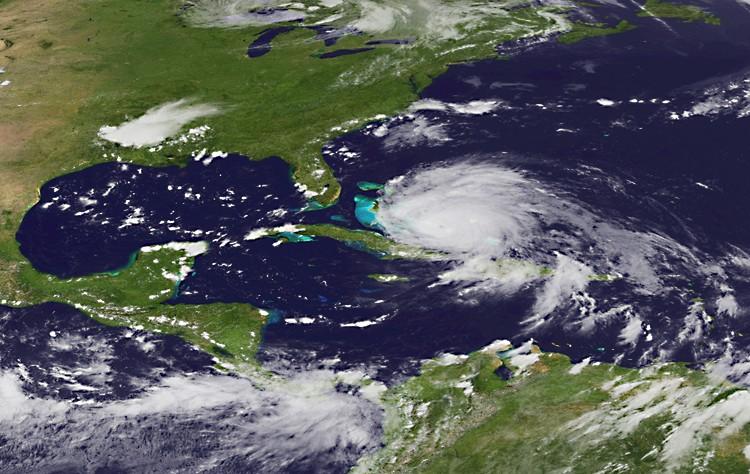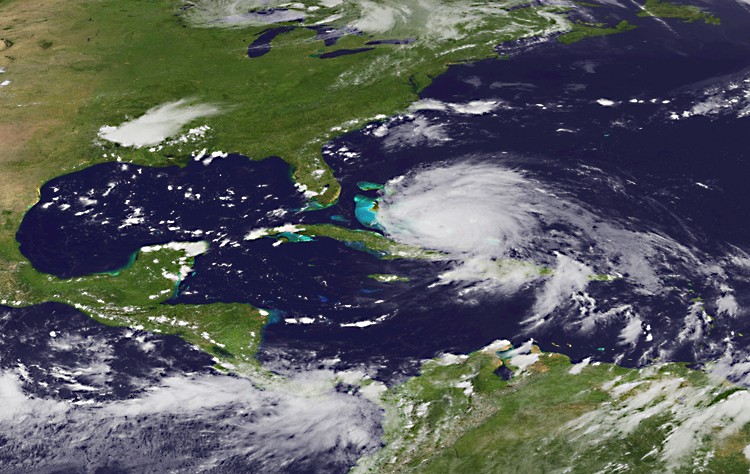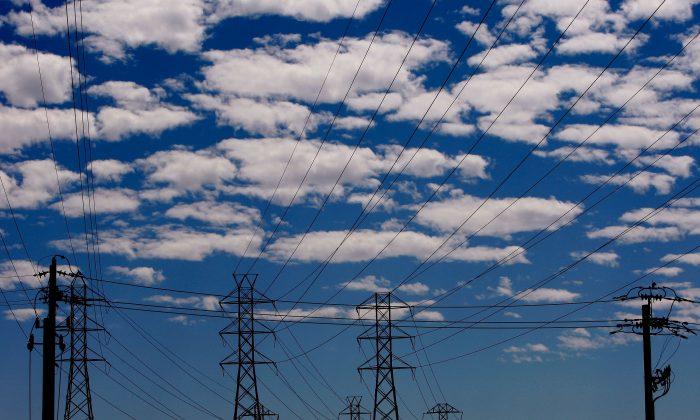Irene became a Category 3 hurricane and took aim at the North Carolina Outer Banks and New England this weekend, sparing Florida and Georgia. The “storm has strengthened and now is a Category 3 with 120 mph sustained winds. Irene has shifted a little over to the east and is expected to hit Cape Hatteras with winds at about 115 mph late Saturday night,” said Dave Samuhel, senior meteorologist at AccuWeather.com in a telephone interview.
It has been three years since a hurricane reached the United States. That was Ike, which struck Texas.
The storm hit Puerto Rico on Monday, Aug. 21. President Obama declared a state of emergency for Puerto Rico on Tuesday, Aug. 22, and FEMA funds have already been released for rescue and relief. “The efforts to save lives, protect property, public health, and safety in which first responders have been working during this emergency, as well as other emergency protective activities such as municipal shelter operations, may be eligible for federal reimbursement,” said FEMA’s Federal Coordinating Officer Justo Hernandez, in a FEMA statement. An emergency declaration means the federal government handles 75 percent of the costs after a disaster.
Irene may become a Category 4 Hurricane during its path through the Bahamas into Thursday. The State Department has warned Americans to consider the risks of travel to the Bahamas, Turks and Caicos, and has made arrangements for consular personnel to leave.
According to AccuWeather.com, Irene’s path is similar to the track taken by Hurricane Bob in 1991, the last hurricane to make landfall in New England.
“A look at latest computer model track forecasts suggest a higher chance of Irene tracking along or just off the coast of eastern Florida and making landfall along the Carolina coast,” stated AccuWeather.com hurricane and tropical weather expert meteorologist Dan Kottlowski in a press release.
This scenario will give Irene time to strengthen into a major hurricane becoming an even greater danger to lives and property at landfall.
Should the storm head for North Carolina, authorities may reverse traffic on I-40, a highway that runs from coastal Wilmington north-northwest into Tennessee. The secretaries of Transportation and Crime Control & Public Safety, with the governor decide to do that that if there is a mandatory evacuation.
Even though Irene will arrive at the Outer Banks Saturday afternoon or evening, the pounding effects of the hurricane will begin much sooner.
On Friday, the outer rain bands of Irene will reach the eastern Carolinas and tropical moisture from Irene merging with a front could also lead to heavy rain across northeastern North Carolina and neighboring Virginia.
Destructive winds of 100 to 130 mph will lash the Outer Banks on Saturday afternoon and evening.
Winds at this strength can flatten trees and cause significant damage to homes and buildings.
Should Irene track west of these barrier islands, the Outer Banks will experience storm surges of 7 to 13 feet above normal water levels in addition to large and pounding waves. Should Irene pass east of the Outer Banks, flooding storm surge will still not be averted, and winds of a westerly character would instead drive water from the Albemarle and Pamlico onto the western shores of the islands.
Easternmost North Carolina will experience flooding concerns between 4 to 6 inches of rain, with localized amounts to 10 inches this weekend.
Due to this imminent threat, Ocracoke Island residents are encouraged to evacuate as this is an island on the Outer Banks only accessible by boat.
According to AccuWeather.com Hurricane Center, Irene could reach eastern New England as a Category 1 hurricane late Sunday with damaging winds and flooding storm surges.
Widespread flooding could happen in the Northeast and mid-Atlantic caused by torrential rainfall that will arrive before the storm makes landfall in New England.
Hurricane Irene May Hit Carolinas, Northeast
Irene became a Category 3 hurricane and took aim at the North Carolina Outer Banks and New England this weekend, sparing Florida and Georgia.
By Marie Yeung
8/24/2011
Updated: 10/1/2015





